706 Gordon Setter- a Turn-coat
Is the Gordon Setter a Turn-coat?
by David Hancock
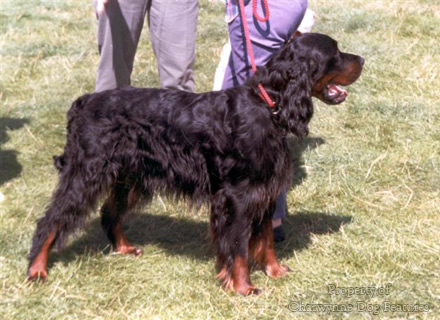 “In using the name of Gordon setter for the black and tan variety we do so because it has become universal, though it is undoubtedly a misnomer, if it is meant to specify that the breed so named originated with the Duke of Gordon, or was alone and specially fostered by him. That this nobleman, who died shortly prior to the oft-mentioned sale of dogs in 1836, by no means confined himself to a special colour is an entirely wrong idea.” Those firm words from the impressive Edwardian dog-writer James Watson, in his valuable The Book of the Dog of 1906, are supported by plenty of evidence to back his forthright statement.
“In using the name of Gordon setter for the black and tan variety we do so because it has become universal, though it is undoubtedly a misnomer, if it is meant to specify that the breed so named originated with the Duke of Gordon, or was alone and specially fostered by him. That this nobleman, who died shortly prior to the oft-mentioned sale of dogs in 1836, by no means confined himself to a special colour is an entirely wrong idea.” Those firm words from the impressive Edwardian dog-writer James Watson, in his valuable The Book of the Dog of 1906, are supported by plenty of evidence to back his forthright statement.
In his wide-ranging A Survey of Early Setters of 1985, an admirable piece of research, Gilbert Leighton-Boyce refers to an account of a visit to the Duke of Gordon’s kennel that took place in 1862. This read: ”…we beguiled the way by a chat with Jubb, the head keeper, whose seven-and-thirty black-and-white tans were spreading themselves…Originally the Gordon setters were all black and tan…Now all the setters in the castle kennel are entirely black and white, with a little tan on the toes, muzzle, root of the tail, and round the eyes. The Duke of Gordon liked it, as it was both gayer and not so difficult to back on the hillside as the dark-coloured…The composite colour was produced by using black-and-tan dogs to black-and-white bitches…” 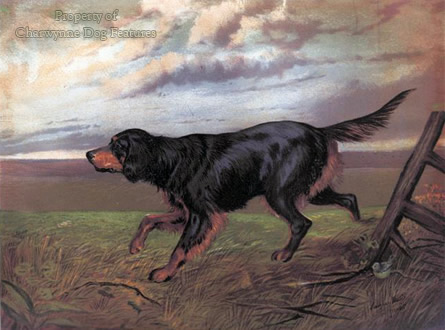
In the time of the Stewarts, the setting dog was used to hold game birds to ground, often with a hawk overhead to keep the birds from flying, while a net was carefully drawn over them. Then with the introduction of firearms and later 'shooting flying', setters were needed, along with pointers, to indicate and then put up feathered game. In pursuit of this function, the setting dog breeds developed both here and on the continent and were widely traded, with a high value on a trained and effective dog. Whilst our setter breeds were evolving here so too were the 'epagneul' breeds on mainland Europe. It is foolish for setter breed historians to claim a long and pure lineage for their favoured breed. Good setters were mated to other good setters irrespective of colour. The landed gentry went on their Grand Tours, sometimes taking their dogs with them through Europe and sometimes coming back with a dog which had impressed them. It was easier to bring foreign dogs into Britain in every previous century than the twentieth. In 1563, Lord Warwick wrote to his brother the Earl of Leicester from Le Havre: “I thank you for sending me so fine a horse. In return, I send you the best Setter in France…”
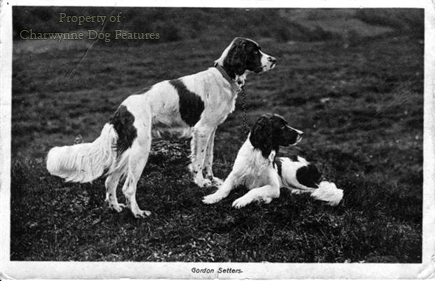 In time certain coat colours were favoured by individual sportsmen both here and abroad. The epagneul breeds varied all over mainland Europe but all had that definite setter appearance: feathering on the tail and legs, a distinct occiput and enormous style when seeking game scent. In Holland the Drentse Patrijshond and Stabyhoun emerged, in France the Epagneul Francais, in Germany the Munsterlander (and later the Langhaar and long-haired Weimaraner). In Britain, distinct strains were stabilised, often exemplified by their coat colour, with far greater variety than nowadays.
In time certain coat colours were favoured by individual sportsmen both here and abroad. The epagneul breeds varied all over mainland Europe but all had that definite setter appearance: feathering on the tail and legs, a distinct occiput and enormous style when seeking game scent. In Holland the Drentse Patrijshond and Stabyhoun emerged, in France the Epagneul Francais, in Germany the Munsterlander (and later the Langhaar and long-haired Weimaraner). In Britain, distinct strains were stabilised, often exemplified by their coat colour, with far greater variety than nowadays.
Setter colours ranged from the liver and whites of the Prouds at Featherstone Castle, keepers Laidlaw at Edmond Castle and Grisdale at Naworth Castle; the Earl of Southesk's, the Marquess of Anglesey's, at Beaudesert in Staffordshire, and Lord Lovatt's tricolours; the lemon and whites of the Earl of Seafield; Lord Ossulston's jet blacks; the milk-whites of Llanidloes and the black and tans (and tricolours) of Gordon Castle, to the black and whites of Lort of Kings Norton. In Ireland, O'Keefe and Baker of Tipperary favoured the white and reds (as the Irish called them), Capt. Butler of County Kerry went for the black and whites, whilst the reds were promoted by the Marquess of Ely, Lord Farnham, Redmond in County Dublin and the Cavendish family of County Cork. 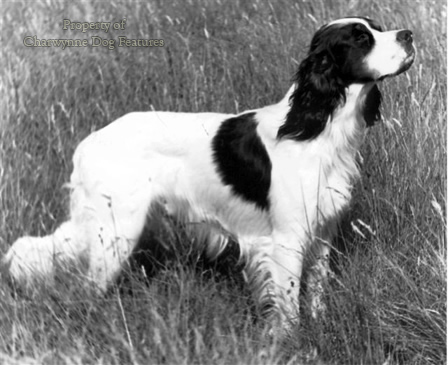
Against that background the setter colours of today look rather impoverished; we have become transfixed by the aura of the pedigree. Not so the Duke of Gordon who was described as "not a man to confine himself to shades and fancies"; he once used a Spitz-wolf cross on deer courses. His black-and-whites may have been a result of using a brace of English Setters given to him by Captain Robert Barclay of Urie. In New Zealand, a litter of black and tans was once produced from an unplanned mating of a blue Belton English to an Irish Setter bitch. The Duke would not have approved the setters named after him needing to possess the now mandatory black and tan jacket of the breed. Not so too the founder of the modern setter, Laverack, who wrote that a change of colour was as good as a change of blood. The advent of dog shows has brought an absurd conformity, restricted breeding programmes to the dictat of the breed standard's stipulations and led to mismarked but otherwise high quality dogs being lost from the gene pool. Bob Truman’s outstanding black and white Gordon Setter, so successful as a working dog, would never win in the show ring, despite his excellent conformation and field prowess.
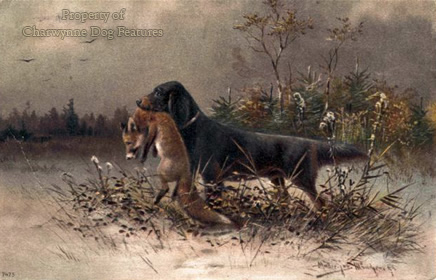 Our Kennel Club’s breed standard for the Gordon Setter makes the following stipulation on coat colour, apart from setting out the black and tan markings: ‘Very small white spot on chest permissible. No other colour permissible’. The Duke must be turning in his grave! How many potentially top-class gundogs in this breed have been destroyed at birth because of the unacceptable colour of their coats, despite the revealed honesty of the gene pool? We now very sensibly recognise red and white Irish Setters; why can’t we respect the gene pool of the Gordon Setter and recognise the coat colours it throws up.
Our Kennel Club’s breed standard for the Gordon Setter makes the following stipulation on coat colour, apart from setting out the black and tan markings: ‘Very small white spot on chest permissible. No other colour permissible’. The Duke must be turning in his grave! How many potentially top-class gundogs in this breed have been destroyed at birth because of the unacceptable colour of their coats, despite the revealed honesty of the gene pool? We now very sensibly recognise red and white Irish Setters; why can’t we respect the gene pool of the Gordon Setter and recognise the coat colours it throws up.
Would a variety of colours threaten breed-type or increase diversity? This a fine breed, but with a narrowing of the breeding stock on colour grounds, far too heavy a coat and persistent anatomical faults, its breeders have much to ponder. The Crufts 2010 judge for this breed reported: “Shortly before the show I was reminded by the Kennel Club about the need to avoid excessive coat and excessive hind angulation, overlong hip to hock and sickle hocks…I do feel that excessive coats are not really typical of the Gordon…” I doubt if the Duke would have lent his name to gundogs dripping with coat and displaying unsound hindquarters; are they truly fit for purpose? Retain the breed’s name and rightly so, but associating it closely with the Duke is unwise.